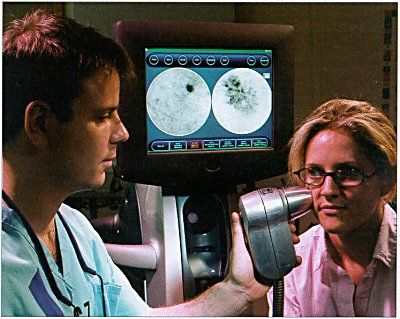Camera Catches Melanoma at Early Stage
The SIAscope uses light and sophisticated computer software to construct an image of each part of the skin. The technique shows when a mole is invading deeper into the skin than normal, allowing early diagnosis of malignant melanoma. The SIAscope, based on spectrophotometric intracutaneous analysis (SIA), was researched at Birmingham University and developed by Cambridge-based Astron Clinica. It is in clinical trials at various sites in the United Kingdom. Dr. Marc Moncrieff (pictured, left) is one of the doctors conducting the trials.

The SIAscope uses light and sophisticated computer software to construct an image of each part of the skin. The technique shows when a mole is invading deeper into the skin than normal, allowing early diagnosis of malignant melanoma. The SIAscope, based on spectrophotometric intracutaneous analysis (SIA), was researched at Birmingham University and developed by Cambridge-based Astron Clinica. It is in clinical trials at various sites in the United Kingdom. Dr. Marc Moncrieff (pictured, left) is one of the doctors conducting the trials.